The Samsung Galaxy S6 and S6 edge Review
by Joshua Ho on April 17, 2015 9:00 AM EST- Posted in
- Smartphones
- Samsung
- Mobile
- Galaxy S6
- Galaxy S6 Edge
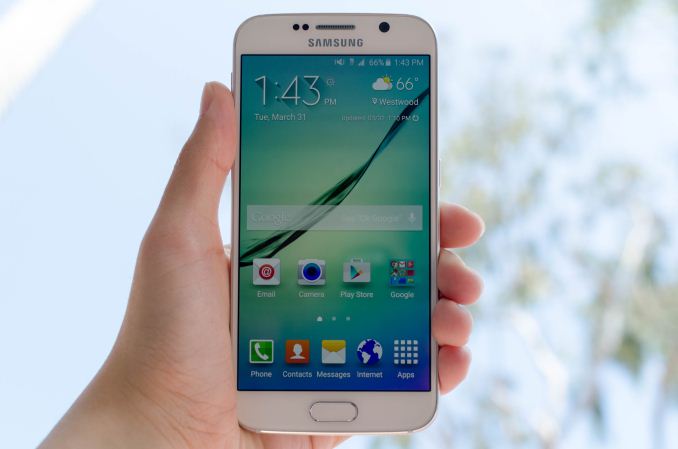
As recently as the Galaxy S5, Samsung had a fundamentally different strategy from companies like HTC and Apple. While design wasn’t ignored completely, Samsung Mobile had a different set of priorities. In general, it felt like Samsung wanted the phone to have every feature possible to please every possible potential customer. Features like a removable battery and microSD card slot seemed to be a crucial point of differentiation. TouchWiz focused on delivering a full suite of applications even if they were pretty much redundant when compared to Google’s applications. Samsung also seemed to cost-optimize their external shells, favoring polymer builds over glass or aluminum. Since the Galaxy S, this strategy paid off handsomely. With the help of strong marketing, Samsung proceeded to dominate the Android market from the days of the Galaxy S2, to the point that almost no other Android OEM was relevant in terms of market share.
However, Samsung’s tried and true strategy failed with the Galaxy S5. Fundamentally, Samsung had always been competing with Apple and their iPhone line-up at the high end, but Samsung consistently held a price advantage. The real problem was the rise of low-cost flagship phones, which squeezed Samsung significantly. Other OEMs were able to justify their high-end pricing by delivering a polished software experience and premium hardware design. In comparison to these relatively cheap phones which delivered largely the same experience and hardware, Samsung’s sales crumbled and the Galaxy S5 didn’t meet sales expectations.
This brings us to the Galaxy S6, which is supposed to be Samsung’s attempt at refocusing their product design and lineup. Design has become a major priority, and the Galaxy S6 is a radical departure from previous design in terms of almost every design choice. The Galaxy S6 represents the best that Samsung can make to some extent, as a great deal of the phone is composed of Samsung-made parts to achieve maximum vertical integration as seen in the specs below.
| Samsung Galaxy S5 | Samsung Galaxy S6 | Samsung Galaxy S6 Edge | |
| SoC | MSM8974ACv3 2.45 GHz Snapdragon 801 | Exynos 7420 2.1/1.5GHz A57/A53 | Exynos 7420 2.1/1.5GHz A57/A53 |
| RAM | 2GB LPDDR3 | 3GB LPDDR4-1552 | 3GB LPDDR4-1552 |
| NAND | 16/32GB NAND + microSD | 32/64/128GB NAND | 32/64/128GB NAND |
| Display | 5.1” 1080p SAMOLED HD |
5.1” 1440p SAMOLED |
5.1” 1440p SAMOLED, Dual Edge |
| Network | 2G / 3G / 4G LTE (Qualcomm MDM9x25 UE Category 4 LTE) | 2G / 3G / 4G LTE (Category 6 LTE) | 2G / 3G / 4G LTE (Category 6 LTE) |
| Dimensions | 142 x 72.5 x 8.1 mm, 145 grams | 143.4 x 70.5 x 6.8mm max, 138 grams | 142.1 x 70.1 x 7.0mm max, 132 grams |
| Camera | 16MP (5132 x 2988) Rear Facing with 1.12 µm pixels, 1/2.6" CMOS size, 31 mm (35mm effective), f/2.2 | 16MP (5132 x 2988) Rear Facing w/ OIS, f/1.9, object tracking AF | 16MP (5132 x 2988) Rear Facing w/ OIS, f/1.9, object tracking AF |
| 2MP Front Facing | 5MP Front Facing, f/1.9 | 5MP Front Facing, f/1.9 | |
| Battery | 2800 mAh (10.78 Whr) | 2550 mAh (9.81 Whr) | 2600 mAh (10.01 Whr) |
| OS | Android 4.4 w/TouchWiz |
Android 5 (64-bit) w/TouchWiz | Android 5 (64-bit) w/TouchWiz |
| Connectivity | 802.11a/b/g/n/ac 2x2 + BT 4.0 (BCM4354), USB3.0, GPS/GNSS, MHL, DLNA, NFC |
2x2 802.11a/b/g/n/ac + BT 4.1 (BCM4358), USB2.0, GPS/GNSS, NFC |
2x2 802.11a/b/g/n/ac + BT 4.1 (BCM4358), USB2.0, GPS/GNSS, NFC |
| Wireless Charging | N/A | WPC 1.1 (4.6W) & PMA 1.0 (4.2W) |
WPC 1.1 (4.6W) & PMA 1.0 (4.2W) |
| Fingerprint Sensor | Swipe | Touch | Touch |
| SIM Size | MicroSIM | NanoSIM |
NanoSIM |
Design
There’s a lot of ground to cover in the Galaxy S6 and S6 edge, but probably the most immediate change is to the design. The Galaxy S6 is a unibody design, with no apparent screws. This does mean that there’s no removable battery or microSD slot, which shouldn’t be a problem for most people although this may be enough for some to write off this phone completely.
The back cover is now glass instead of plastic, and is attached to the phone with glue instead of plastic latches. Regardless of color or model, Samsung has placed an extremely fine pattern beneath the glass that manages to be subtle but also surprisingly brilliant under direct light. It’s tasteful in a way that the Galaxy S5 and Note 4 weren’t. The back of the phone also has a single LED flash, a heart rate monitor, and the camera which bulges out significantly. I personally don’t have a problem with camera humps, but the Galaxy S6’s camera hump is probably the biggest I’ve seen in recent memory.
The glass back cover meets the metal frame of the phone, which provides most of the structural rigidity and strength. On the normal Galaxy S6, this frame has a very slight curve and is almost cylindrical along the top and bottom of the phone, but flattens out along the sides for better grip. The bottom of this frame has the speaker, microUSB port, and 3.5mm headphone jack, which does make for some resemblance with Apple products launched within the last year. At any rate, the placement of the speaker, USB port, and 3.5mm jack are all appropriate for a phone.
The left side of the frame contains the volume buttons, which are clicky and solid, although pressing the buttons off-center does produce a noticeable flex. The right side of the frame has the power button and the nanoSIM slot on the normal version.
On the edge variant, the sides of the frame are dramatically thinner and appear to be angled out when compared to the Galaxy S6. In the hand, this makes it feel much thinner than the S6, but it really feels almost too thin to hold comfortably. Combined with the flat back, it’s really a bit of a struggle to pick up the edge off of a table, which compromises usability when compared to the normal S6.
The top of the frame contains the IR LED for TV capabilities and a hole for a microphone. On the edge variant, the nanoSIM slot is relocated to the top of the phone.
The front of the phone is probably the only aspect of the design that feels relatively similar to the Galaxy S5. However, the texture of the bezel beneath the glass is similar to the subtle finish of the back cover, which makes for a unique visual effect that manages to be tasteful and quite unique. Other than this, we see the same layout as most Galaxy phones, with two capacitive buttons (multitasking on the left, back button on the right) and a physical home button. In the case of the Galaxy S6, this home button has been turned into a fingerprint scanner that is touch-based rather than a swipe sensor. Along the top of the front face, we also see the ambient light sensor, a proximity sensor, the earpiece, and the 5MP front-facing camera. Directly below these items is the display driver beneath the bezel, which is similar to the “logo bar” of the One M7, M8, and every other phone on the market today. On the S6 edge, the sides of the display are curved to reduce the width of the phone, which does make it easier to hold in the hand, but there’s really no bezel reduction here as the side bezels seem to be larger than what we see on the S6.
Overall, the design of the Galaxy S6 and S6 edge is really unlike anything else they’ve produced in recent memory. The phone itself is well-sized and feels much more ergonomic than the Galaxy S5 due to the thinner build and mildly reduced bezel size. It really feels like Samsung cared about the design of the phone this generation, and the attention to detail here immediately puts Samsung near the top in this area. The front of the phone still feels a bit derivative, but I suspect that there isn’t much Samsung can do to change this when faced with design constraints like a physical home button. The S6 edge does look better in some ways, but ergonomically the sharper and thinner edge is a compromise compared to the normal S6. Either phone is still easily one of the best-designed phones I’ve seen this year.


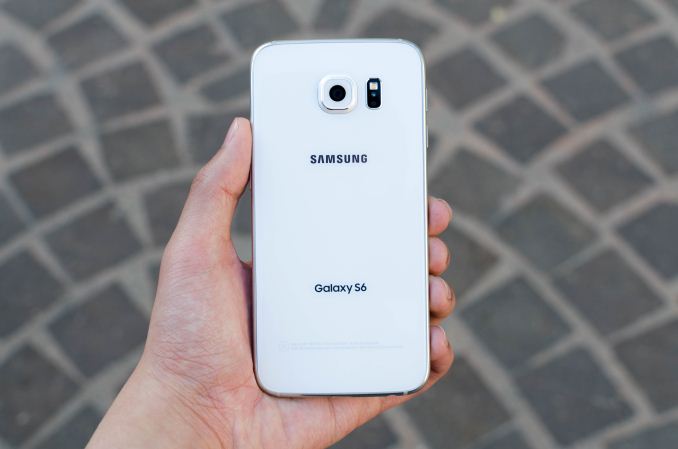
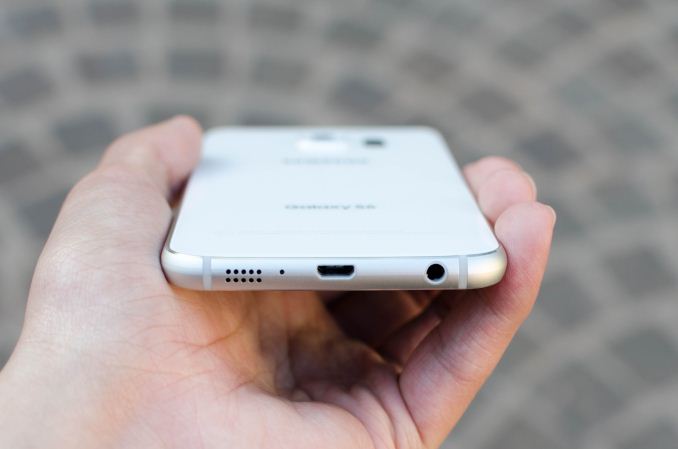
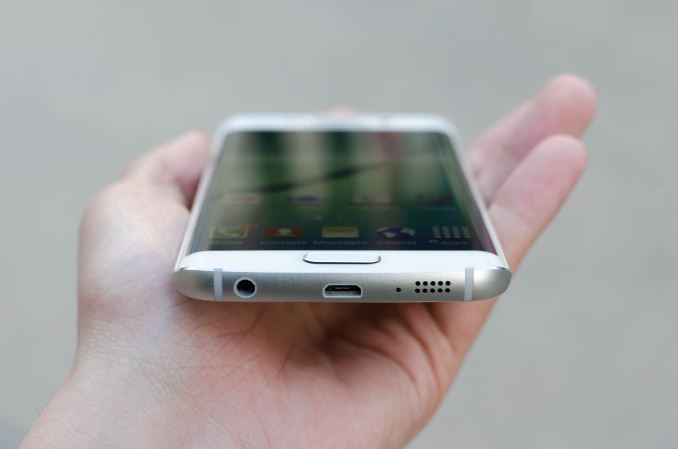



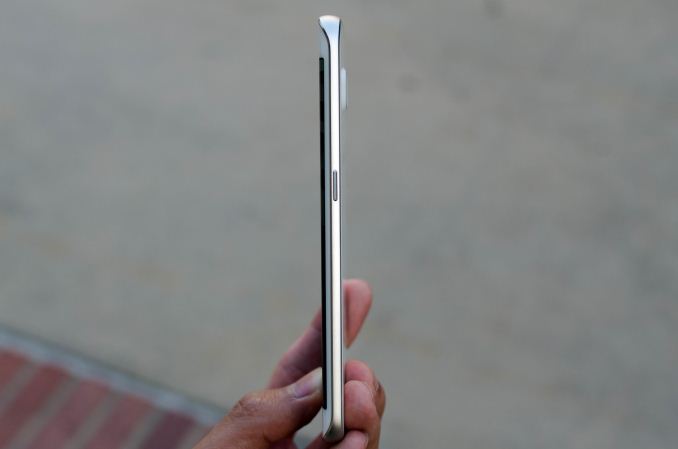

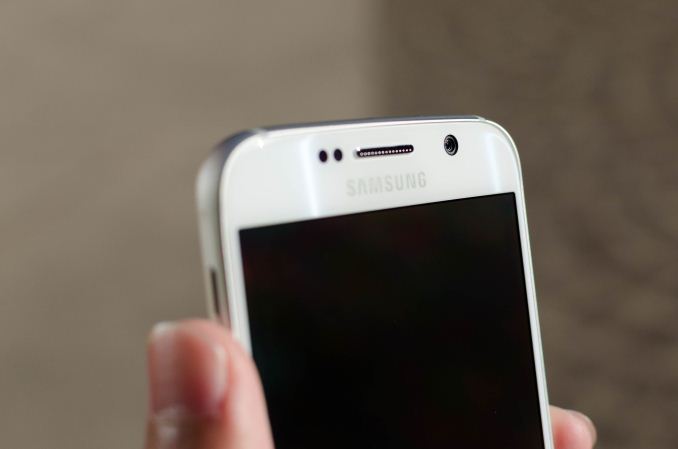
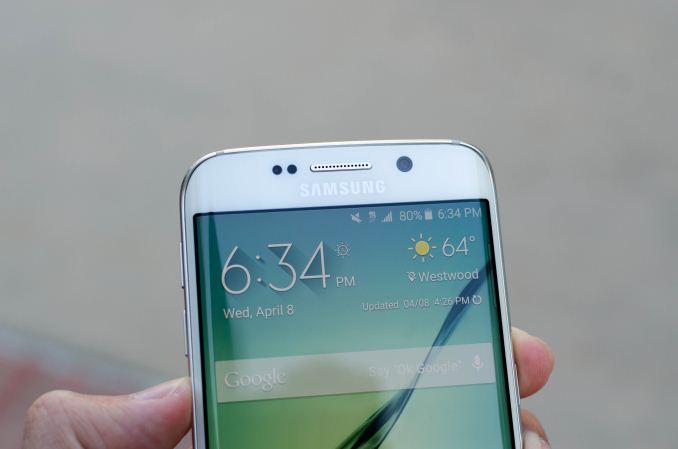








306 Comments
View All Comments
Margalus - Friday, April 17, 2015 - link
It's not "without" a warrant. Read what the op said and what I responded to. A judge legally subpoenaed the information and that person wants to hide it from the courts. Big difference from just grabbing your phone and getting the information without a subpoena.Buk Lau - Saturday, April 18, 2015 - link
Warrants and subpoenas are both writs, which the court issues with legally justified reasons. In essence they are the same thing, so unless you are actually engaged in illegal activities I see no reason to be scared that your fingerprint can get subpoenaed LOLFlushedBubblyJock - Friday, April 24, 2015 - link
you mean the court issues with any lies and excuses they so desire, including those far outside the spirit and letter of the lawthat's current reality sheepy
akdj - Sunday, May 31, 2015 - link
That's paranoid backwoods Idaho shit bub. Nothing to do with 'reality'LordConrad - Friday, April 17, 2015 - link
Lawyers and Doctors are examples of people with legal and sensitive information. Also corporations worried about corporate espionage. That's just off the top of my head, I'm guessing you didn't think before responding.Also, just because the average person has nothing to hide does not mean they should lose their right to protect their data.
Margalus - Friday, April 17, 2015 - link
I thought before responding. The key thing here is that a court issues a legal subpoena for the information. You are talking about hiding information from a judge that has legally subpoenaed the information. Unless what you are doing is illegal, there is no need to have to hide it from the court that legally subpoena's the information. And in fact you would be breaking more laws by trying to subvert a legal subpoenaNow if you are a child rapist that records what you do on your phone, I could understand about being worried about "legal" subpoenas.
LordConrad - Saturday, April 18, 2015 - link
You aren't subverting anything if you use a pattern or password lock, because knowledge CAN'T be subpoenaed as it's protected by the fifth amendment. Also, how many times have police agencies obtained information without due process? Good attorneys can usually get such information thrown out, but not always.akdj - Sunday, May 31, 2015 - link
You're in luck. In order TO USE the fingerprint system, one must 'choose a password, pattern ...' (Possibly tgird choice, can't remember not gonna look) as a backup. So you're both gonna be alright. Just quit with the paranoia. Judges, lawyers and doctors don't have things to hide in their cell phones, anymore than a CEO of a corporation or Jony Ive that a court's going to subpoena its contents without damn good reason.Let's see how far ol Tom Brady wants to 'appeal' this decision. After talking to Goddell, if the suspension is upheld, Tom won't be able to hide, dispose of or erase the contents of his cell phone, iPad or computer ...however he communicated with 'the deflator' -- the court can absolutely then subpoena his phone, as well as the ball boys' phones. They should be worried. If you should, maybe you should check yourself.
It's like the paranoia of cloud storage, using Google or allowing 'Pop Ups'. It's irrelevant what you're doing to 'hide'. You can't. If you're online, everything you do is forever embedded somewhere, in some server, and won't go away.
Like BubblyJack below me (jocks don't spend all day bagging on Apple when no one else has mentioned them) -- digital paranoia is silly, unless you're doing something illegal and IMHO, if you are and these tools catch you, AWESOME, more power to the 'tools, capturing digital thieves, identity thieves and phishing antagonists, child porn traders and drug sales sites like the Silk World Take down recently, torrenting sites stealing music and TV or movies --- they're all bad, they all suck, and they should be exsposed
** I'm in no way endorsing government censorship or web oversite, including the ability to gamble, watch porn ( of age ) --- even buy weird, niché stuff, but breaking the law is braking the law, and we've got internationally recognized 'law' and morales that I'm absolutely for 'governing' online. It would really suck if the 'net was somehow broken because of the 1%'ers, and not holding back your information can't 'teach' systems like Google more than they can hurt us when it comes down to it **
akdj - Sunday, May 31, 2015 - link
Last line was supposed to be allowing our information to Google CAN teach the 'systems' and in turn, Us more about ourselves. Interests. Health. Shopping deals and aggregation of our own data, pictures, media collections and management. If we allow it to, we're just a number in a pot of hundreds of millions.FlushedBubblyJock - Friday, April 24, 2015 - link
lordconrad, the sheep have been trained, expect no enlightenment, no western standards, and no cluethus we have the current situation, all the data is mined and bluffdale is packed to the gills
the retards won't believe no matter how many times they are informed and it is proven to them, and their pat answer is : what does it matter anyway!!??!! ( only a criminal would care )
so I'm not certain how eggheads have become glorious useful idiots, other than the wool is so thick there's no meat on them bones, and the shrunken brain has crumbled to coddled dust